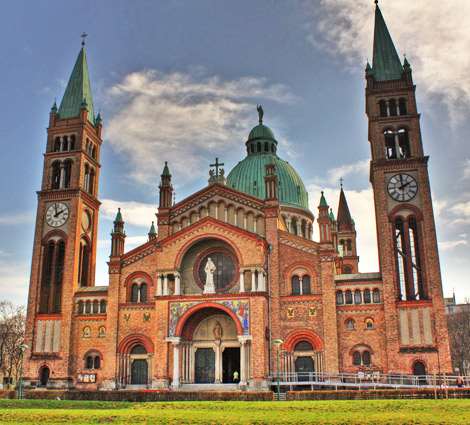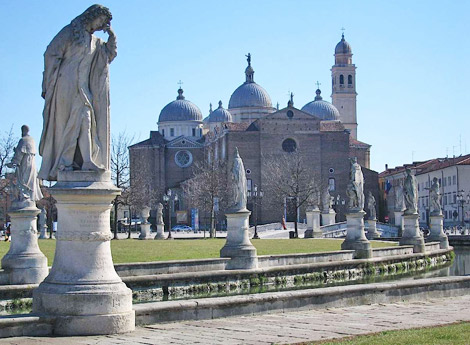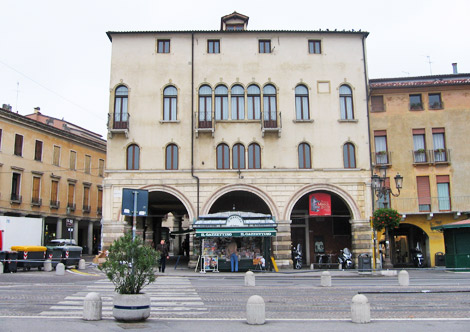Padua
Padua (Padova in Italy) is a lively town in a region called Veneto in the Northeastern Italy. It is surrounded by Colli Euganei the volcanic hills which produce an excellent type of wine. There are plenty of reasons for visiting Padua. Firstly it is a location where everyone can feel as if being in an arts centre. The city is rich in monuments, castels and frescoes. Secondly it is surrounded by lots of villas and gardens which make it a looking like the Garden of Eden. Moreover its geographical position is strategic since it is near Verona, Treviso and the Adriatic shores.
Some personalities who lived, worked or are bound to this town are: Wolfgang Amadeus Mozart, Francesco Petrarca, Galileo Galilei, Giotto, Donatello, Andrea Mantegna and William Shakespeare who used Padua as setting of one of his masterpieces "The Taming of the Shrew".

The main attraction for visitors is the Cathedral. It is dedicated to Saint Anthony. Often the church is called the Church of the Saint where the term "Saint" refers to Saint Anthony (Sant'Antonio in Italian). Relics of the Saint are housed in the Cathedral. It has been one of the most popular destinations for Christian pilgrims for ages and is one of the four churches which are under the jurisdiction of Vatican even though it does not belong to the territory of Vatican. The Church consists of various styles: the façade is Romanesque, the archs and the rose windows are Gothic and the two towers have got Arabic elements. Many artists contributed to the completion of this building: Andrea Mantegna worked at the lunette in the central door where he depicted Saint Anthony and Saint Bernardino from Siena; the three bronze portals were sculptured by Camillo Boito; Donatello designed and sculptured the altar and its statues; and Michele Sanmicheli created the monument dedicated to the Cardinal Pietro Bembo.

Scrovegni Chapel is among the sights a visitor must see in Padua. It was created on the remains of an ancient arena in Padua. It was purchased by a rich family – the Scrovegnis – who wanted it to become a monument dedicated to Reginaldo Scrovegni, Enrico's father. The decoration of its interior is plain: a single room and a presbytery with a sarcophagus at the end. The walls were painted by Giotto. This artist executed some scenes from the Old and the New Testament and the last ones are those concerning the Resurrection and the Final Judgement. The aim was to let people coming into the Chapel think about the salvation of one's own soul. In the past, the presbytery was characterized by a crucifix by Giotto which can now be admired in the Museo degli Eremitani.

Further worth visiting attractions of Padua include the Museo d'Arte Medioevale e Moderna which contains lots of Fleming masterpieces and Italian paintings by Giotto, Tiepolo, Tiziano, Tintoretto; the Musei Civici Eremitani which includes the Scrovegni Chapel and an archaeological museum where Roman, Egyptian, Greek objects can be admire; the Museo del Precinema (Museum of Precinema) which is situated in Palazzo Angeli and exposes items related to the history of pre-cinema era.
